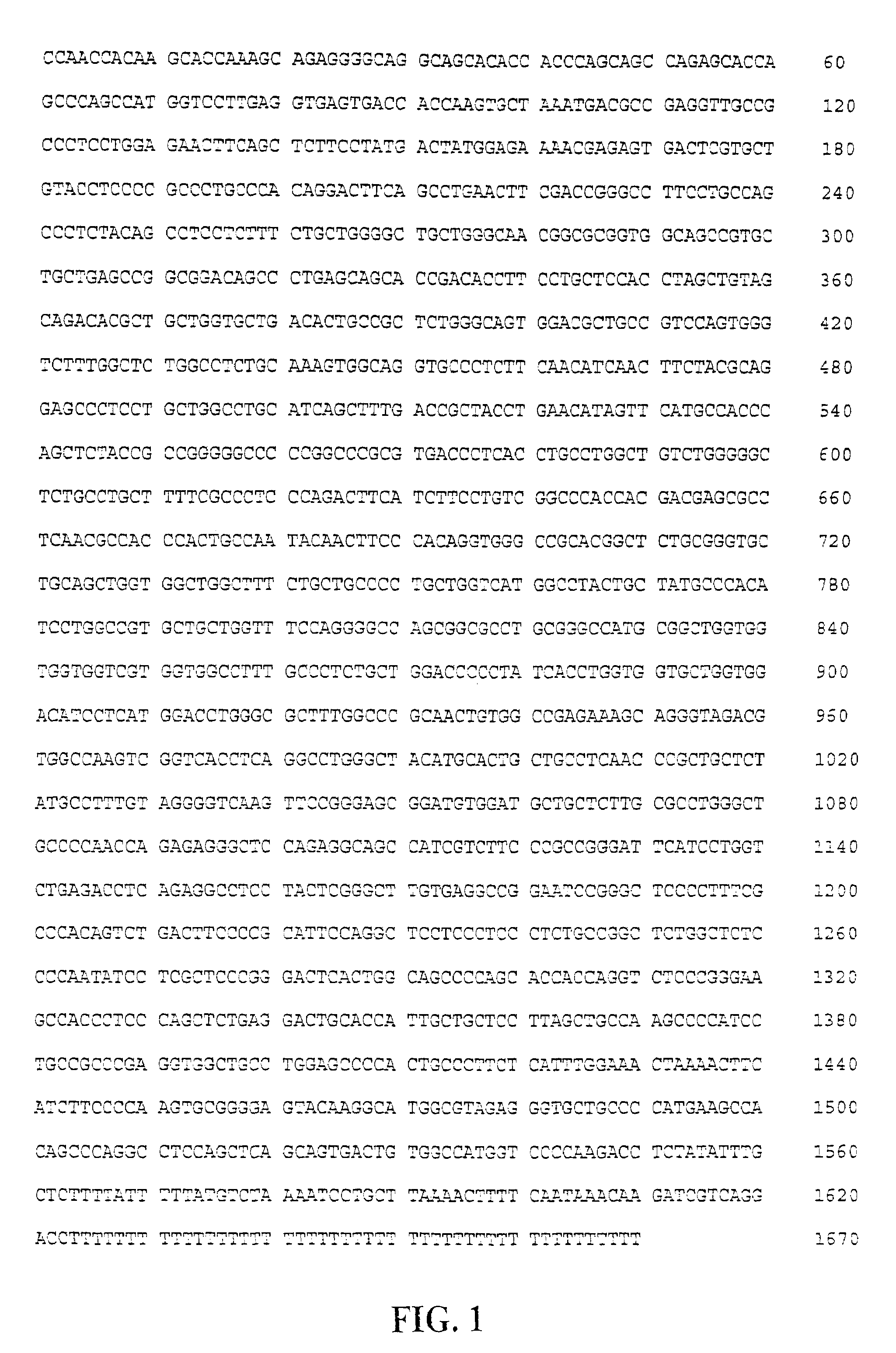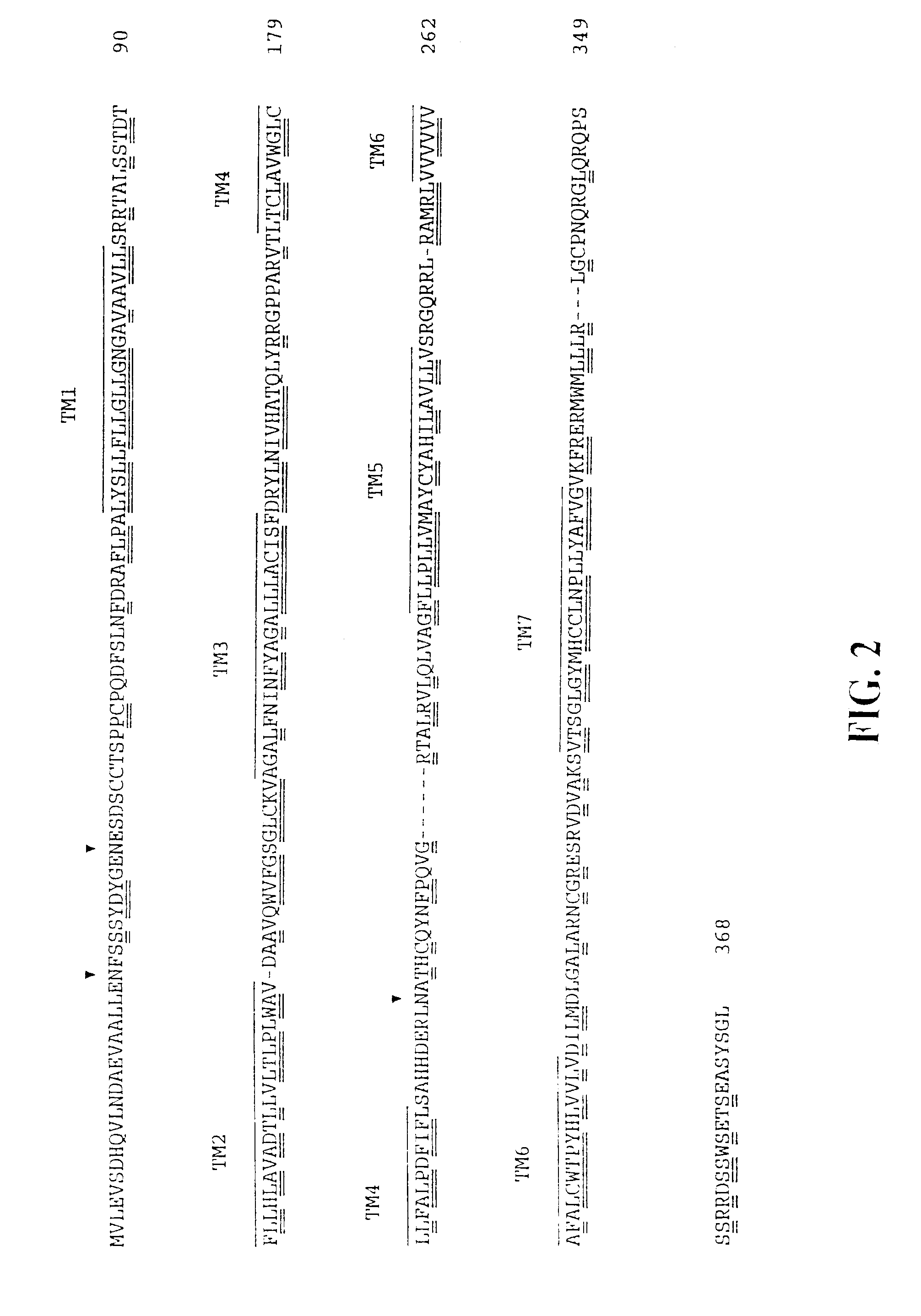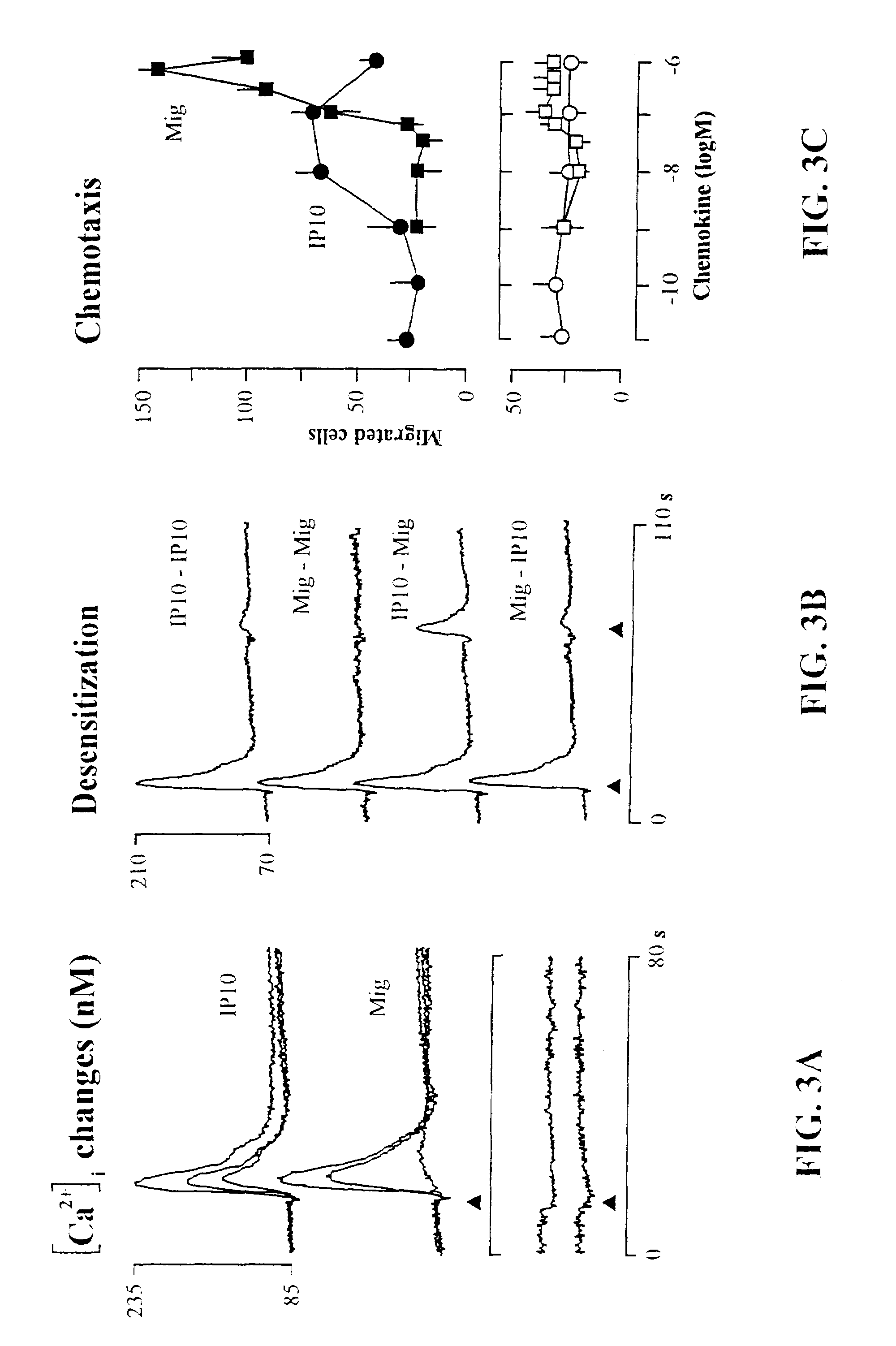Method of inhibiting leukocytes with human CXC chemokine receptor 3 antibody
a technology of chemokine receptor and antibody, which is applied in the field of inhibiting leukocytes with human cxc chemokine receptor 3 antibody, can solve the problems of undefined ligands of these receptors, and achieve the effect of stimulating receptor function and inhibiting (reducing or preventing) receptor activity
- Summary
- Abstract
- Description
- Claims
- Application Information
AI Technical Summary
Benefits of technology
Problems solved by technology
Method used
Image
Examples
example 1
[0162]Standard molecular biology techniques were used (Sambrook, J. et al., 1989, Molecular Cloning: A Laboratory Manual, Cold Spring Harbor Laboratory Press, Cold Spring Harbor, NY).
[0163]DNA fragments coding for putative T lymphocyte-restricted chemokine receptors were generated using the polymerase chain reaction (PCR). Two degenerate oligonucleotide primers were designed based on conserved motifs of chemokine receptors. Primer design was based on the conserved nucleotide sequences within transmembrane domain 2 (TM2) and transmembrane domain 7 (TM7) of the chemokine receptors IL-8RI (CXCR1), IL-8R2 (CXCR2), CC-CKR1 (CCR1), CC-CKR2 (CCR2) and the orphan receptors EBI I, LESTR, and BLR1 / MDR15 (EBI I, Birkenbach, M. et al., J. Virol., 67: 2209-2220 (1993)); LESTR, Loetscher, M. et al., J. Biol. Chem., 269: 232-237 (1994); and BLR1 / MDR15, Dobner, T. et al., Eur. J. Immunol., 22: 2795-2799 (1992) and Barella, L. et al., Biochem. J., 309: 773-779 (1995)).
[0164]T...
example 2
Expression in Activated T Lymphocytes
[0175]In view of the observed chemokine selectivity, the occurrence of the IP-10 / MigR in leukocytes and related cell lines was examined by Northern blot analysis. 10 μg samples of total RNA were examined from freshly isolated human blood monocytes, neutrophils, lymphocytes (PBL), nylon-wool purified T cells, and from cultured cells including cloned human CD4+ T cells (KT30) and CD8+ T cells (ERCD8), cloned NK cells (ERNK57), and PBL cultured for 10 days (1-2.5×106 cells / ml in RPMI 1640 medium containing 2 mM glutamine, 1×non-essential amino acids, 1 mM sodium pyruvate, 100 μg / ml kanamycin, 5×10−5 M 2-mercaptoethanol, and 5% human serum) in the presence of 400 U / ml hrIL-2. (human recombinant IL-2 was a gift of Dr. A. Lanzavecchia, Basel Institute of Immunology, Basel, Switzerland). Agarose gels were stained with ethidium bromide to check the integrity and amount of total RNA on the gel prior to blotting. RNA samples were analyze...
example 3
IP-10 Binds with High Affinity to a Receptor Expressed on L1.2 Cells Transfected with CXCR3 DNA and on Activated T Cells
[0210]Additional binding studies were performed using radiolabeled IP-10. Chemokine binding to target cells was carried out as described previously (Ponath, P. D., et al., J. Clin. Invest., 97:604-612 (1996); Van Riper, G., et al., J. Exp. Med., 177(3):851-856 (1993)). Cells were washed once in PBS and resuspended in binding buffer (50 mM HEPES, pH 7.5, 1 mM CaCl2, 5 mM MgCl2, 0.5% BSA, and 0.05% azide) at a concentration of 107 / ml. Aliquots of 50 μl (5×105 cells) were dispensed into microfuge tubes, followed by the addition of cold competitor (unlabeled IP-10) and radiolabeled chemokine (0.05 nM 125I-labeled IP-10). The final reaction volume was 200 μl. Nonspecific binding was determined by incubating cells with radiolabeled chemokines in the presence of 250-500 nM of unlabeled chemokines. After a 60-minute incubation at room temperature, the cells were washed thr...
PUM
| Property | Measurement | Unit |
|---|---|---|
| concentration | aaaaa | aaaaa |
| concentration | aaaaa | aaaaa |
| molecular mass | aaaaa | aaaaa |
Abstract
Description
Claims
Application Information
 Login to View More
Login to View More - R&D
- Intellectual Property
- Life Sciences
- Materials
- Tech Scout
- Unparalleled Data Quality
- Higher Quality Content
- 60% Fewer Hallucinations
Browse by: Latest US Patents, China's latest patents, Technical Efficacy Thesaurus, Application Domain, Technology Topic, Popular Technical Reports.
© 2025 PatSnap. All rights reserved.Legal|Privacy policy|Modern Slavery Act Transparency Statement|Sitemap|About US| Contact US: help@patsnap.com



